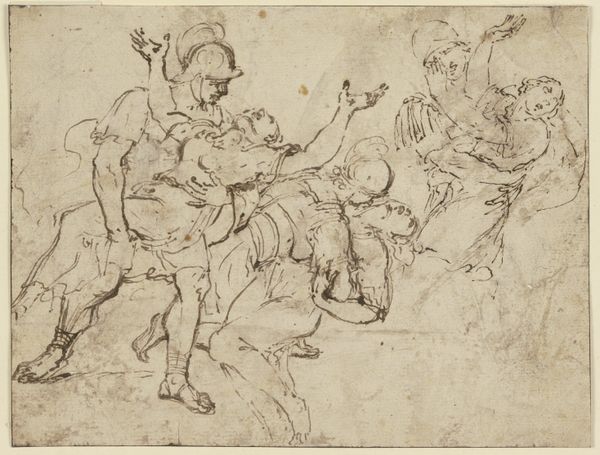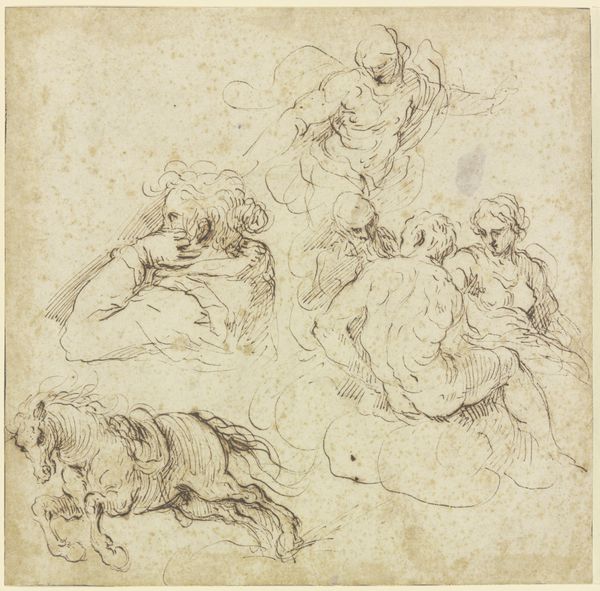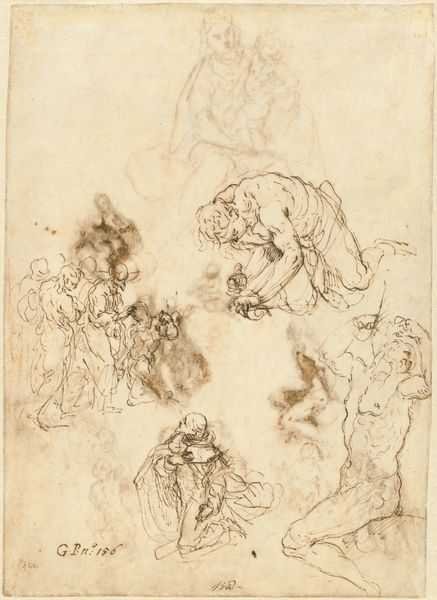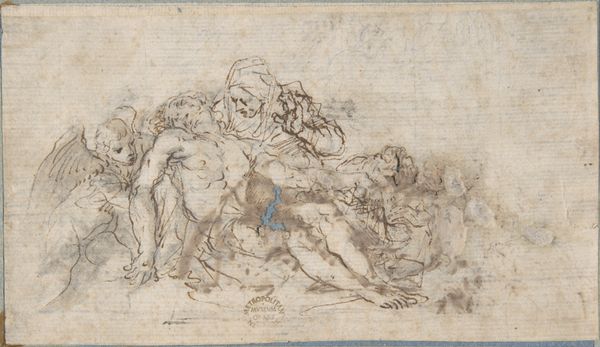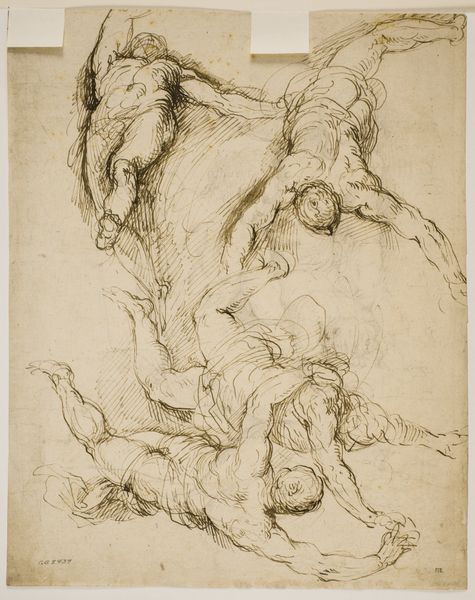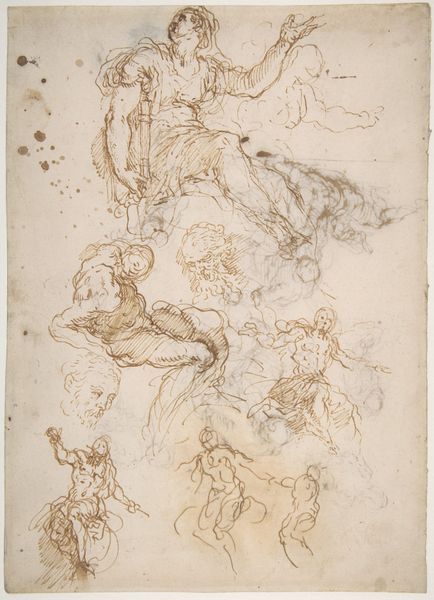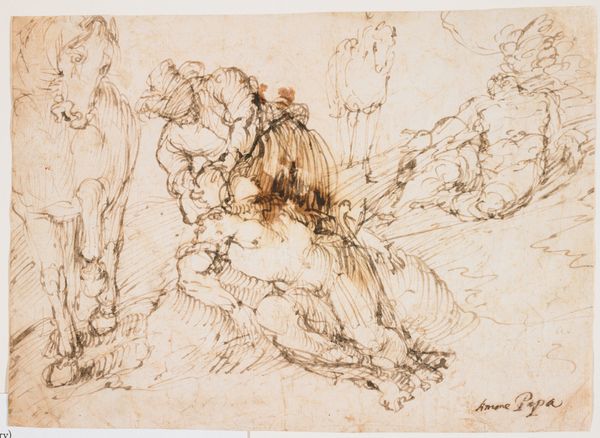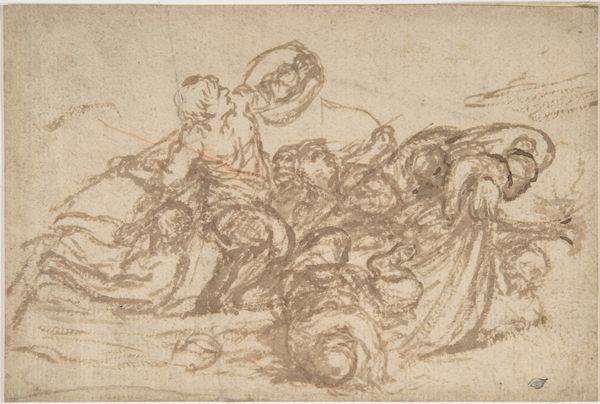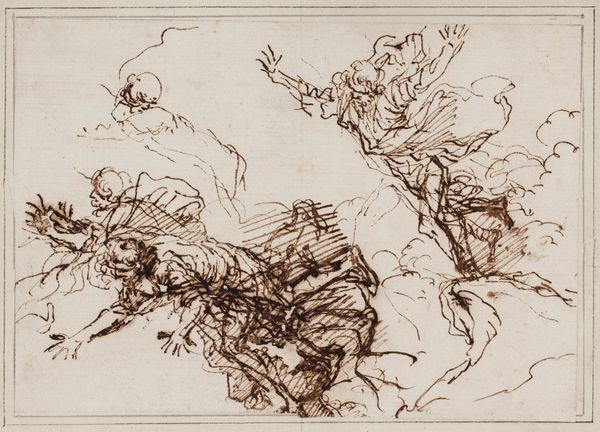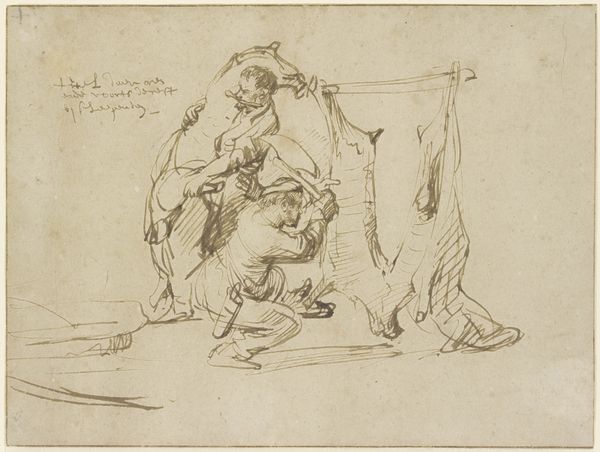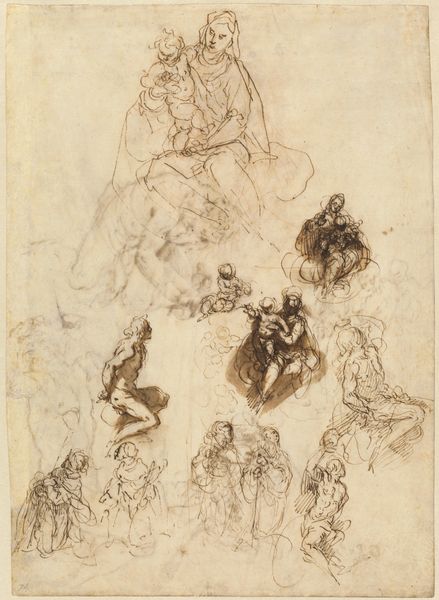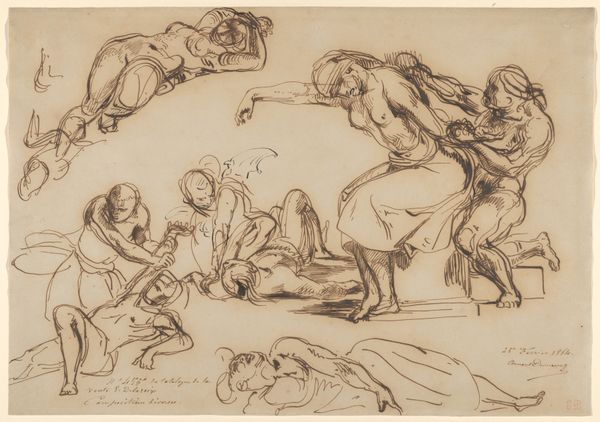
The Martyrdom of Saint Bartholomew; The Conversion of Saint Paul 1590 - 1595
0:00
0:00
drawing, ink
#
drawing
#
narrative-art
#
figuration
#
11_renaissance
#
ink
#
history-painting
#
academic-art
#
italian-renaissance
Dimensions: overall: 35.4 × 26.1 cm (13 15/16 × 10 1/4 in.)
Copyright: National Gallery of Art: CC0 1.0
Curator: At first glance, there's something urgent and chaotic about this ink drawing. The composition feels very dynamic, almost frenetic. What do you see? Editor: Palma il Giovane renders "The Martyrdom of Saint Bartholomew; The Conversion of Saint Paul" with such evocative linework. Immediately, the subject matter speaks to issues of religious power, belief, and its violent enforcement throughout history. I see struggle, certainly. Curator: Right, Palma produced this piece between 1590 and 1595; a time of heightened religious tension and inquisition, a time where visual imagery became paramount in propagating dogma. But consider how ink, a humble substance, helps depict the extreme suffering of Saint Bartholomew. The varying weight of the lines contributes much drama, doesn’t it? Editor: Absolutely. Look at the almost brutal depiction of Bartholomew’s flaying; the use of hatching emphasizes the sheer physicality and brutality of the act. How were these drawings, like this double-sided sheet, produced? Were they studies, made as independent drawings or as part of a larger workshop practice? And what kind of audience was it reaching? Curator: Scholars suspect these were preliminary studies; they served as explorative gestures—consider the material limitations, and the constraints within his workshop environment. Ink lends itself well to quickly capturing initial ideas and the loose strokes highlight rapid ideation, offering flexibility during a busy production schedule within Palma's workshop. The art market of the time fostered distribution and collecting for devotional and art appreciation, meaning many hands may have used or consumed pieces like these. Editor: The figures’ musculature, distorted poses, and facial expressions broadcast a complex blend of fear, agony, and ecstasy—typical Baroque affect, yet also indicative of social turmoil, I argue. Are these martyrdom and conversion just depictions of historical events or powerful statements about faith's cost? Curator: A fruitful query! These studies grant unique insights into his labor. Palma wasn't just rendering narratives; he constructed them through the repetitive action of mark-making, while hinting at religious messaging relevant for consumption. Editor: In short, he highlights the interplay between violence and conversion, urging a deeper understanding of that crucial moment in history’s intricate narrative—one worth thinking about today.
Comments
No comments
Be the first to comment and join the conversation on the ultimate creative platform.
